The MDE15 works, selected by the artists to be exhibited in the conventional showrooms, will be set in the rooms of the Museo de Antioquia and its Casa del Encuentro (Meeting House), and the Casa de la Música de EPM (EPM Music House) located in the Parque de los Deseos (Park of Wishes). The MDE15 will also include some fleeting works made in different public spaces of the city.
The artists invited by the MDE15 under these two categories, alphabetically listed:
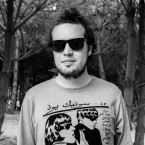 Adrián Balseca
Ecuador
Adrián Balseca
Ecuador
Medio camino (Halfway) reveals the particular route of Adrian Balseca from Quito to Cuenca, aboard an Andino Miura 77, the first motor vehicle assembled in Ecuador in the late seventies. The artist begins a weeklong trip along 437 kilometers. He voluntarily takes the fuel tank away from the vehicle. Thus, he ends up depending on the solidarity of others throughout the road to be able to complete his journey. In the video El Andino -a small pick-up truck, produced over a period of oil boom during the military dictatorship of the general Guillermo Rodriguez Lara, becomes a sort of icon…
Read more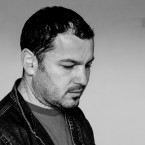 Adrian Paci
Albania
Adrian Paci
Albania
His work deals with migration, displacement, the repercussions of globalization, and the transformation of cultural identities. Albanian Stories is his first video work. It features Paci’s three-year-old daughter recounting an improvised fairytale in which folkloric characters commingle with “soldiers” and “international forces.” The fairytale becomes a vehicle for exposing both the particularity and the universality of conflict, as well as the way in which our understanding of events is colored by the circumstances surrounding their reception. The work The Column shows the journey of a block of marble from its extraction from a quarry in China to its destination in…
Read more Adriana Escobar
Colombia
Adriana Escobar
Colombia
In the context of the MDE15, Adriana Escobar uses her works to investigate two social situations: prostitution and displacement. Prostitution is seen from the point of view of people who were displaced and escaped from violence in the countryside. They came to the city and found a place with limited economic options. Their perspectives and stories are told in order to understand the difficulties of breaking the chain that defines their futures. The case of the community of Moravia was useful to approach the phenomenon of displacement. People who came to Medellín from the countryside found an old garbage dump…
Read more Alexandra McCormick
Colombia
Alexandra McCormick
Colombia
McCormick exhaustively looks into the meanings of the word territory in Colombia and produces unprecedented correspondences among the multiple sides of this notion in the Colombian context and the political power of this word. Se intercambia territorio (Exchangeable territory) comes from the inability to name my territory a land that legally belongs to her, but is affected by armed conflict. She uses useless legal documents as fertilizer for growing portable territories –any visitor can take one. Thus, her own memories activate the collective memory about it. Her Territorio inestable (Unstable Territory), the moldy shoe the artist found, has grown, photographed…
Read moreThe film comes from the complex macroeconomic, geopolitical and social order dimensions resulting from the production of goods and the way people move in the global environment of consumption. It arises from stories that take the sea as the center of their relationships, mobilizations and resources. It is a complex and immeasurable space. According to Sekula: “We even forget that disaster strikes us”. They use narratives of small objects, that is to say, an antithesis: communities, small towns and clusters; roads, ports with charging systems and routes; floating schools, civic organizations, residents of neighborhoods and villages, drivers of ground vehicles,…
Read more Amar Kanwar
India
Amar Kanwar
India
Los testimonios relámpago (The fleeting testimonies) is a choreographic video installation in eight channels that addresses the troubled history of the Indian subcontinent since the Partition in 1947. The main topic here is sexual violence against women. This work brings back 60 years of social and political conflicts from individual perspectives and the impossibility of directly telling the experiences. Along the screenings, memories are supported by pictures and daily life objects, the silent witnesses of the traumatic experience. The body, especially the female body, becomes the main topic of the stories; it is the place where honor, hatred and humiliation…
Read more Ana Patricia Palacios
Colombia
Ana Patricia Palacios
Colombia
The complexities of subjectivity take up the work of Palacios: the existential pressures of twin sisters (her own case) or specific social groups such as boxer girls or soldiers. The traveler, who quickly slides as a very little point among the mountains, is a contemporary Latin American subject this time, half peasant, half urbanite, who knows the city but is a stranger in there. He lives in rural areas where he uses the rudimentary and risky wire between the mountains, tarabita or garrucha (cable car), to transport people and merchandise to the roads leading to the city, because it…
Read more Annaleen Louwes
Netherlands
Annaleen Louwes
Netherlands
“A man can wash away shame with a glass of water, but for a woman, all the seawater is not enough.” Louwes work has been characterized by a strong focus on social topics and relations for groups that sit at the margins of the established “norms” of society. Her keen interest in the way people survive in exceptional circumstances and the impact this has on their body language is shown in several of her series of photographs. In 2008 she installed a temporary photography studio in the women prison in Tirana, where she not only took portraits of the inmates…
Read more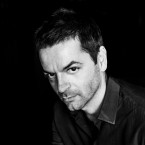 Anri Sala
Albania
Anri Sala
Albania
An elegant young woman makes her way through an empty city. At every crossing she stops, looks and listens. Should she wait or should she run? Should she wait for others or take the risk on her own? The city is Sarajevo, and the route the woman takes became known as Sniper Alley during the siege of the city endured by its citizens for 1,395 days between 1992 and 1996. The woman, played by Spanish actress Maribel Verdú, is reliving her individual journey through the collective memory of the city, and the trauma of the siege. Throughout the siege, the Sarajevo…
Read more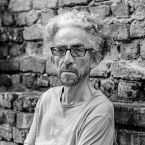 Antonio Caro
Colombia
Antonio Caro
Colombia
The conceptual strength, his extraordinary ethical conviction, the way he uses simple materials and even his own person, are emblems of Antonio Caro’s work. He reviews colonialist manifestations –his classical Colombia imposed on the logo of a popular soft drink, or sarcastic references to the weaknesses of art-; the reassessment of local values and traditions, whether it is the image of the corn (Maíz), the signature of Quintín Lame, or Su salud está por el suelo (Your health is on the ground), among many others. Direct communication of their messages is also interesting to him, including the reproduction and distribution…
Read more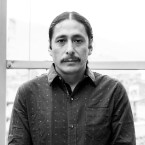 Antonio Paucar
Perú
Antonio Paucar
Perú
Paucar does impressive performances that allow him to present cultural differences by displaying a complex individual imaginary. This artist lives and works between Germany and the Peruvian Andes. He approaches the transition between these two contexts in a particular way by creating situations in which his body —taken to extreme temporal and physical resistance conditions— plays an essential role. As part of the MDE15, Paucar was invited to develop a new project able to respond to the context of Medellín. In a new performance for the camera, the artist suggests —from a role-play using his own body limbs— a reading on the intersections between the strong presence of militarism in Colombia and the construction of a…
Read more Arquitectura Expandida y Caldo de Cultivo
Colombia
Arquitectura Expandida y Caldo de Cultivo
Colombia
These two collectives, coming from different places within the field of contemporary art practices in Bogotá, share some questions and initiatives on the public dimension of the urban area. Arquitectura Expandida promotes the development of the territory through the implementation of a high-intensity citizenship. Caldo de Cultivo is interested in producing cultural devices to reveal the power relationships that shape the area of the city. Therefore, as well as encouraging direct action on small urban paces, these groups add a political dimension and critical pedagogies to overcome usual theoretical discussions and improve the ways neighbors and users from the city…
Read more
